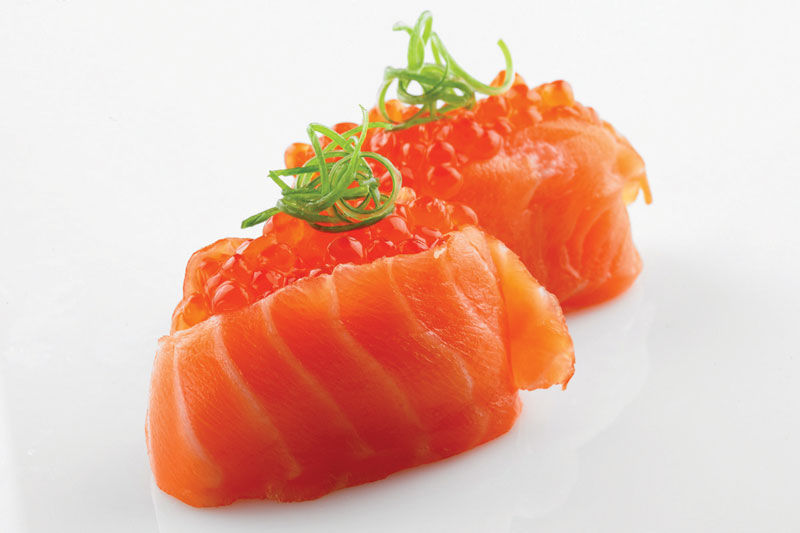In continuation to my previous post on Saturated Fats, in this post I will be writing about Monounsaturated fats. Monounsaturated fatty acids (MUFA) are chemically classified as fatty acids containing a single double bond. In contrast, polyunsaturated fatty acids (PUFA) contain two or more double bonds and saturated fatty acids (SFA) do not have double bonds. Like other fatty acids, MUFA are almost completely absorbed by the intestine and are oxidized for energy production, converted into other fatty acids, or incorporated into tissue lipids.
Fatty acids have important roles in body as signal-transduction pathways (the chains of molecules that relay signals inside a cell), cellular fuel sources (that is, in the absence of glucose, fats are fuel for the cells), the composition of hormones and lipids, the modification of proteins and energy storage within adipose tissue (specialized fat cells) in the form of triacylglycerols. Dietary MUFAs lead to a decrease in central adiposity, a reduction in visceral fat accumulation, and enhanced beta-cell function.

There are 11 MUFAs and they can be also classified based on length of their chain into Medium, Long and Very Long Fatty Acids (there are no short chain fatty acids among the MUFAs). They are Capoleic acid, Myristoleic acid, Palmitoleic acid, Oleic acid, Elaidic acid, Vaccenic acid, Gadoleic acid, Erucic acid, Nervonic acid, Lauroleic acid and Brassidic acid. Not much is known about the last two, so this post covers only 9 MUFAs.
Function of Caproleic Acid:
Caproleic acid is an uncommon medium chain monounsaturated fatty acid. It plays a role as a metabolite and is also used as a food additive and general flavoring agent in condiments and seasonings.
Sources: milk, butter, parmigiano, goat's milk
Function of Myristoleic Acid:
Myristoleic acid is long chain omega 5 fatty acid and is uncommon in nature. It has a role as an apoptosis inducer and a plant metabolite. Apoptosis occurs when one or several cells are infected leading to cell death. Cell death in organisms is necessary for the normal development of cells and the cell cycle maturation.
Sources: beef, cream, whale blubber, butter

Function of Palmitoleic Acid:
Palmitoleic acid is an omega 7 long chain fatty acid, important for pharmaceutical applications. It also has anti-thrombotic effects, which can help prevent stroke. It is anti-inflammatory, and improves insulin sensitivity in liver and skeletal muscles in animals.
Sources: macadamia oil, fish oil, breast milk, durian (fruit)
Function of Oleic Acid:
Oleic acid is an omega 9 long chain fatty acid. Its hypotensive effects work to lower blood pressure and regulate membrane lipid structure. Foods rich in oleic acid work effectively to lower cholesterol and raise HDL. Oleic acid enhances the immune systems to combat infections. It has antioxidant, anti-inflammatory and wound healing effects. Studies show that it even has beneficial effects on genes linked to cancer.
Sources: olive oil, pork, macadamia nuts, pecan nuts
Function of Elaidic Acid:
Elaidic acid is a long chain monounsaturated trans fatty acid. It is a trans-isomer of oleic acid. In ruminants it results from the bacterial hydrogenation of unsaturated fatty acids. Elaidic acid is the major trans fatty acid in margarine, fried foods and partially hydrogenated oils. It also occurs in a very small amount in goat, sheep and cow milk. Elaidic acid increases plasma cholesterylester transfer protein (CETP) activity which lowers HDL cholesterol.
Sources: almonds, canola oil, peanuts, margarine

Function of Vaccenic Acid:
Vaccenic acid is a trans-fatty acid occurring naturally in the fat of ruminants and in dairy products such as butter, milk and yogurt. It is a long chain monounsaturated fatty acid. Studies show that vaccenic acid does not have adverse impact on cardiovascular biomarkers including C-reactive protein. In fact vaccenic acid has a positive influence on immune response. It is also known for its anticarcinogenic properties.
Sources: butter, cow's milk, egg yolk, margarine
Function of Gadoleic Acid:
It is a long chain monounsaturated fatty acid found mostly in marine life. Studies show that Gadoleic acid suppresses lipogenesis and inflammation, and promotes fatty acid oxidation in the liver and white adipose tissues. In the vessels, it lowers lipid deposition, macrophage accumulation and also improves plasma lipid and cytokine profiles. It also improves the Omega-3/Omega-6 ratio. All these account for improvement in lipid metabolism, insulin sensitivity, and atherosclerosis.
Sources: cod, shark, fish liver, rapeseed oil
Function of Erucic Acid:
Erucic acid is a monounsaturated omega-9 very long chain fatty acid found naturally in oil-rich seeds of the mustard family. Unlike some other monounsaturated fatty acids which may reduce the risk of heart disease, animal studies have shown that diets with oils containing excessive erucic acid may lead to adverse health effects, such as myocardial lipidosis, which is an accumulation of lipids in heart muscle fibres that may reduce the contractile force of heart muscles.
Sources: rapeseed oil, mustard oil, halibut, herring

Function of Nervonic Acid:
It is a monounsaturated long chain fatty acid, composed of choline, phosphoric acid, sphingosine, and fatty acid. It is a basic constituent of nerve cells and brain nerve fibers. Deficiency of nervonic acid causes series of brain associated diseases such as senile dementia, apoplexy, brain atrophy, cerebral palsy, insomnia, memory loss and forgetfulness. Nervonic acid can cross the blood brain barrier completely and directly into the damaged parts of nerve fibers or nerve cells to enhance memory.
Sources: swordfish, red salmon, macadamia nuts, sesame seeds

Comments